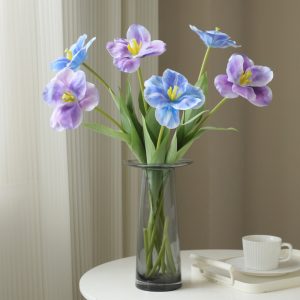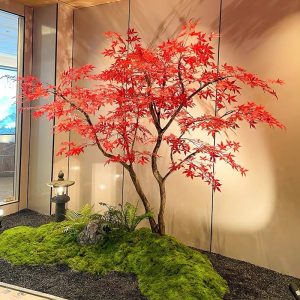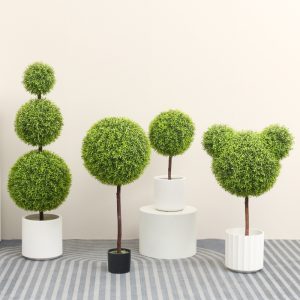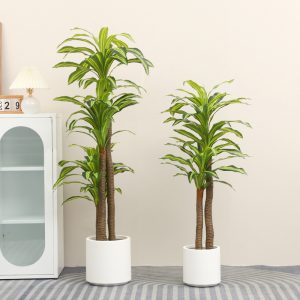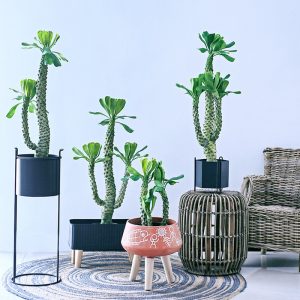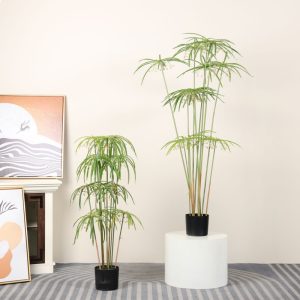On Sunday, November 19, 2026, at 2:17 PM, the Arizona sun bathed Eva’s red brick walls. Holding a terracotta vase, I arrived at her new home for the first time.
The door opened, and Eva, dressed in denim overalls with a sprig of dried eucalyptus in her hair, smiled. “Come on in, I just baked some cactus cookies,” she said, stepping aside to let me in. The sweet scents of cinnamon and chocolate mixed with sandalwood, and a faint “desert air” drifted from the bay window, where a cluster of upright plants stood.
The foyer was decorated with geometric cement tiles, and a black iron candelabra held dried lavender, gently swaying. The living room, with its white walls glowing with warm yellow light, had dark brown hardwood floors that gleamed. A gray suede sofa was piled with camel-colored knitted cushions, and across from it, an industrial-style bookshelf was filled with plant guides and vintage cameras. In the corner of the bay window, a half-meter tall cluster of plants stretched their sharp spines.
They sat in a light gray concrete pot, with aged cracks along the rim. Three “cacti” stood in varying heights: the tallest topped with a round “body” covered in pale yellow spines, the middle one resembling a palm stretching out, and the smallest adorned with several round “prickly pears.” The sunlight slanted across them, casting shadows of different lengths.
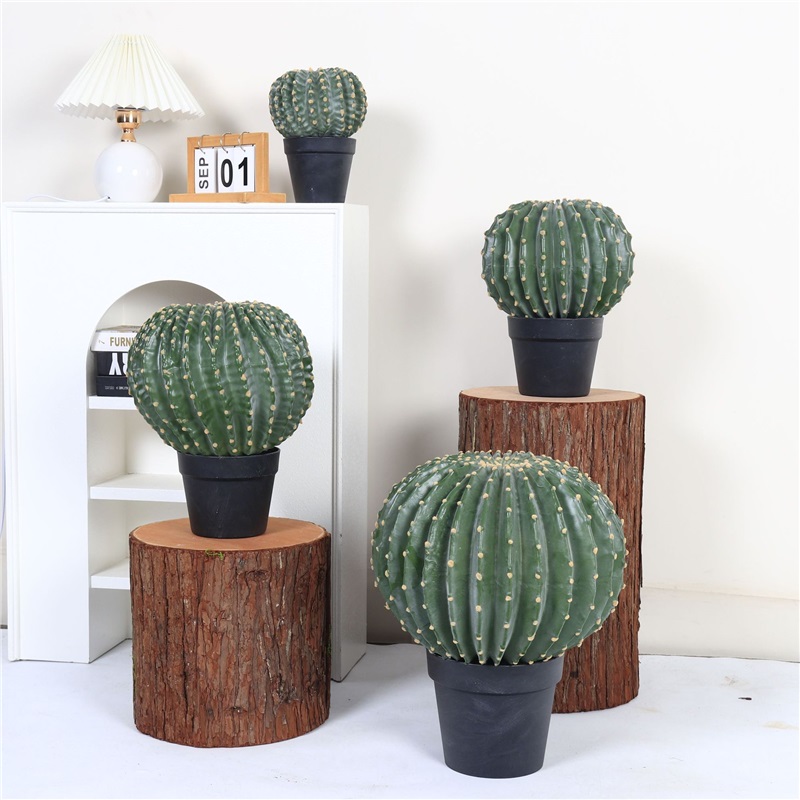
“Are you stunned?” Eva handed me a glass of ice-cold lemon juice, beads of water sliding down the sides. I snapped back to reality, my fingers hovering over the sharp spines, unsure of their authenticity—they looked so real.
“It’s a fake cactus,” Eva said with a smile. I sighed in relief and gently touched the “prickly pear.” The texture was hard with delicate patterns, and the “ball” had natural-looking wrinkles.
“Is this really fake?” I leaned in closer to inspect it. The spines on the tallest one had a few light brown “spots” at their base, looking like insect damage. Sunlight filtered through the blinds, flowing across the “cactus,” its gray-green “skin” glistening, more vibrant than even the real cacti I had seen in botanical gardens.
Eva curled up on the sofa and laughed. “I used to have real cacti, remember? Last year when I was away for two weeks, I came back to find the cat had eaten half of it. The cat also threw up for two days.” I remembered her sharing the “disaster scene” photos.
“But this one is different,” she pointed at the round “prickly pear.” “Last week, my nephew threw it around like a ball, and it was perfectly fine after I dusted it off.” As the sunlight moved, I noticed the “soil” was made of white pebbles mixed with fake moss, feeling dry to the touch. The best part was that one of the plants had a delicate pink “flower” at the top.
“I originally wanted to place real plants,” Eva handed me a cookie. “But I love this greenery so much. It just gives the living room a bit of a rough, natural feel.” She pointed at a desert landscape painting on the bookshelf. “Even the artwork was chosen to match it.”
Eva’s daughter, Lily, ran over, holding a stuffed cat. The cat jumped up onto the windowsill, sniffed the “spines,” and, seeing no reaction, curled up beside them to nap.
“See, even the cat’s fooled.” Eva laughed as she pulled Lily away. “If it were a real cactus, there would have been chaos with the cat.”
Lily pointed at the pink “flower” and said, “Mom says this is a magic flower that never wilts and won’t be picked by bees.” I noticed a small drainage hole at the bottom of the pot. Eva explained, “It’s for decoration. I spilled half a cup of juice in it once, and just turned it upside down to dry—no stains left.”
Sitting on the sofa, sipping tea, my eyes kept following the shadow of the cactus. The afternoon sunlight was soft, casting the shadow on the white wall. I started imagining my own desk at home—there’s a corner that’s been empty for half a year. A smaller artificial cactus would fit perfectly there.
In the morning, its shadow would be reflected on a coffee cup; in the evening, the desk lamp would cast a golden edge around the “spines.” Even if I forgot to clean, a quick dusting would keep it tidy—unlike the real succulents on my windowsill, which always protest with yellowing leaves when I forget to water them.
“My husband always says I’m a plant killer,” I turned my tea cup. “I’ve killed pothos with root rot, overwatered succulents, and let hanging plants die.” Eva handed me a napkin. “That’s why I recommend you try artificial ones. This cactus can be left alone for months and will stay lively, even in a north-facing room, without getting leggy.”
As the sun set, its orange-pink glow highlighted the cactus bodies. I noticed the various shapes: some looked like palms, others like stacked stars, and some resembled fat fingers. No wonder the cat had been fooled.
Lily was drawing near the pot, with crayon shavings falling into the “soil.” Eva casually wiped it clean. “If it were a real cactus, it would be full of crayon shavings,” she said with a smile. Looking at the cactus, I finally understood its magic—preserving the plants’ resilient beauty but removing the sharp, frustrating parts.
Before I left, I changed my shoes in the foyer and glanced back at the living room. The sunset stretched the cactus’s shadow long across the floor. Eva’s husband sat by the windowsill, reading the newspaper, while the cat curled up next to the cactus.
“I’ve decided,” I said, tying my shoes with excitement, “I’ll buy a fake cactus when I get home. It’ll be the perfect addition to the bookshelf next to my study.” Eva smiled and handed me a business card. “This store has highly realistic ones, and don’t forget to choose the one with little flowers.”
In the car, the heater still hadn’t warmed up, but I was already imagining the third shelf on my bookshelf. Sunlight would pass through the “spines” and cast shadows on the pages of my books. A wooden tray would complement the surrounding plants, and on weekends, I could sit next to it, writing proposals and occasionally looking up to admire the greenery.
In the rearview mirror, the red brick house shrank in the distance, but the shadow of that cactus remained etched in my mind.







